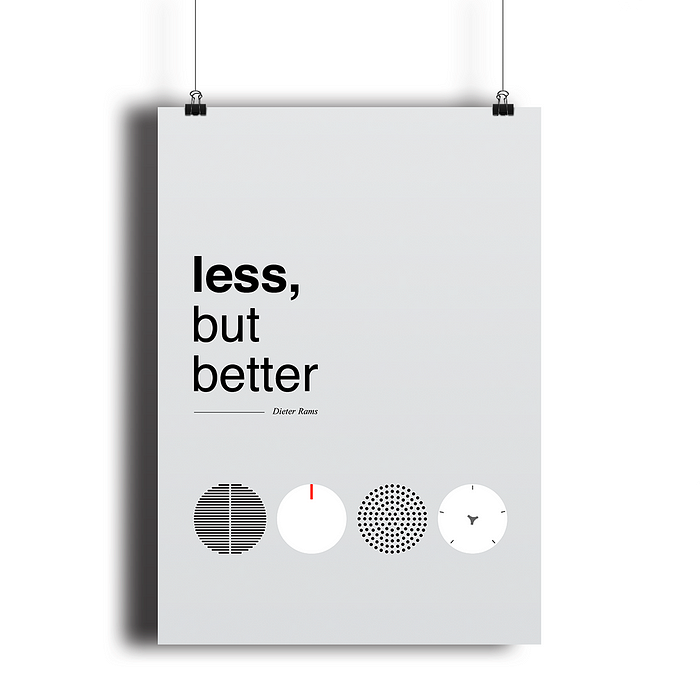Great products do less, but better
When feature bloat can hurt more than help your business goals.

Products start small and focused.
They do one thing really well — and that’s the primary reason they become successful.
A few years later, the team behind the product comes to the conclusion it has to do more. Features are added, new use cases are covered, and functionality becomes more sophisticated. That happens for the following reasons:
- A percentage of users start asking for those additional features — either spontaneously (e.g. app store reviews) or, most of the times, when prompted via research and surveys.
- We (as in “the product team”) identify a strong business opportunity around adding those new features, which will expand our product into other categories and steal market share from our competitors.
- We assume that more lines in the water necessarily means growth. “You know, if I add this little feature, I’ll be more competitive and more likely to get new customers”.
The product scope grows.
Its navigation system has to be reimagined to accommodate all the new stuff.
We are constantly adding new features to it, but we rarely take features out.
To the point our product tries to do so many different things, that its value proposition starts to dilute amongst the plethora of features we have created.

And then, it’s too late
– We can’t remove this feature. Customers would complain if we did so.
– How many customers?
– It’s a small number. But they can be really vocal about it.
That’s understandable. Every team wants to build a great product, and by doing so, have a higher number of happy users. Adding new features to the product is a common way of buying short-term, artificial happiness.
On the other hand, removing features can be a challenge:
- It can be hard to justify taking a feature out. Nobody is asking us to take things out of the product, anyways.
- It can be hard to gauge whether removing a feature is worth it.
- Some users probably use that feature (and in all fairness, some of them might have converted only because of that feature).
- From a business perspective, adding features will always take priority over removing features. Why would we spend energy removing a feature AND making customers unhappy?
Until a newer, fresher, more focused competitor product launches and starts to steal your customers.

Do less, but better
Think about the most successful products you know. The ones you use everyday, as a customer. Twitter, Lyft, Venmo, Slack. One single value proposition, articulated through the various product layers: features, architecture, interactions, usability, branding, communications.

The concept of less, but better, is definitely not new.
German industrial designer born in 1932, Dieter Rams has become one of the most recognized and influential designers of the 20th Century. A firm believer in Functionalism, his rational vision of design is summarized by his famous phrase: “Less, but Better”.
But how does that concept apply to digital product design?
- Start small. Take what you think your minimum viable product is and cut it in half. And then cut it in half again.
- Use data. If we’re doing our job right, we have data on how users are interacting with the products we build. Use that data to build a case when you notice a certain feature is being underutilized.
- Set a feature budget. Agree on a certain threshold of features your product will have, and keep prioritizing the ones that are more closely aligned with your business goals for that year.
- Say no. Focus means saying “no” to customer feedback and feature requests. It feels uncomfortable at the beginning, but gets better over time.
- Compensate users. When you’re removing features you know users will complain about, come up with a plan on how to mitigate their frustration. What can you give them before, during, and after the feature removal to keep them excited about your product?
In the end, there is no simple formula to balance short-term feature requests with longer-term product health.
Once in a while, try to step away from the day-to-day of feature development, and ask yourself: “if I were to start building my product from scratch, which 3 features would I include in it, today?”
The majority of your customers will thank you for that.
This article is part of Journey: lessons from the amazing path of being a designer.

